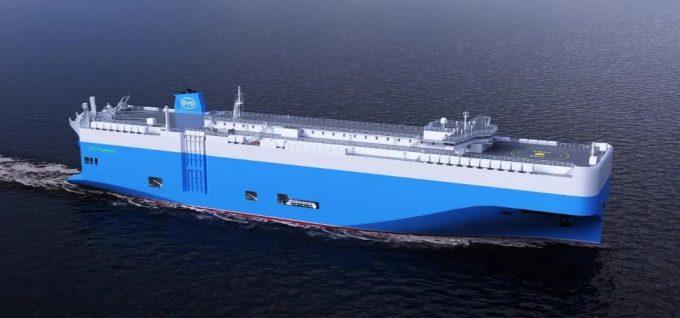Pledge to boost HMM box fleet to help 'weakened' THEA stay competitive
With less than a year before Hapag-Lloyd leaves THE Alliance to form the Gemini Cooperation ...

Non-operating containership owners (NOOs) are expanding their activities into other shipping sectors to cushion themselves from falling box ship charter rates.
Supply is expected to considerably outpace demand in container shipping in the next few years, and that will have a negative impact on daily hire rates for chartered tonnage.
And the bleak outlook has prompted shipowners to look at other sectors of shipping for expansion.
Seaspan Corp, jointly owned by Japanese ocean carrier ONE, has diversified into the booming car-carrier sector with the order of up to ten 10,800 ceu (car equivalent unit) dual-fuel specialist PCTC (pure car and truck carrier) vessels.
The newbuild orders, at the China State Shipbuilding Corp shipyard, Shanghai Waigaoqiao Shipbuilding, are in partnership with car-carrier specialist Hyundai Glovis, which will take the vessels on long-term charter after delivery.
According to Seaspan, the LNG-powered ships are the “largest PCTCs under development to date” and will be “methanol and ammonia-ready”.
President and CEO Bing Chen added: “This deal signifies our customers’ trust and value of Seaspan’s commitment and capability executing alternative fuel initiatives.
Seaspan’s chief commercial officer, Kun Li, said: “As jurisdictions seek to transition from conventional-fuelled vehicles to electric vehicles, we see this as an opportunity to not only meet the current demand for sustainable shipping solutions, but also to support the global initiative for cleaner transportation alternatives.”
According to Clarksons Research, shipyards have a huge PCTC orderbook of 80 vessels, for a capacity of 677,000 ceu, which equates to 37% of the current car-carrier fleet.
Seaspan is the world’s largest NOO, with an operating fleet of 142 containerships ranging in size from 2,500 teu to 24,000 teu, with a total capacity of 1.4m teu. The vessels are leased to liner operators on long-term charters, normally at fixed daily hire rates.
Seaspan also has 47 vessels under construction, for delivery through to December next year. which would take its operating capacity close to the 2m teu mark, ranking it alongside the fifth-largest ocean carrier, Hapag-Lloyd.
Notwithstanding an average remaining charter period for its current fleet of 3.9 years, Seaspan’s diversification into another shipping segment suggests, like Greece-based NOO Danaos which has invested in the dry bulk sector, that cash-rich shipowners want to insulate themselves from any further downturn in container markets.
Indeed, when charters start to expire, extensions or new fixtures are unlikely to match those signed at the inflated levels of the early post-pandemic years.
Seaspan’s third-quarter operating profit came in at $219m, from revenue of $447m, compared with $203m and $388m in the same quarter of 2022.
During Q3, related party transactions with ONE, which holds a 28.7% equity stake in parent company Poseidon Acquisition Corp, included revenue of $108m from the charter hire of some 24 vessels.
Comment on this article